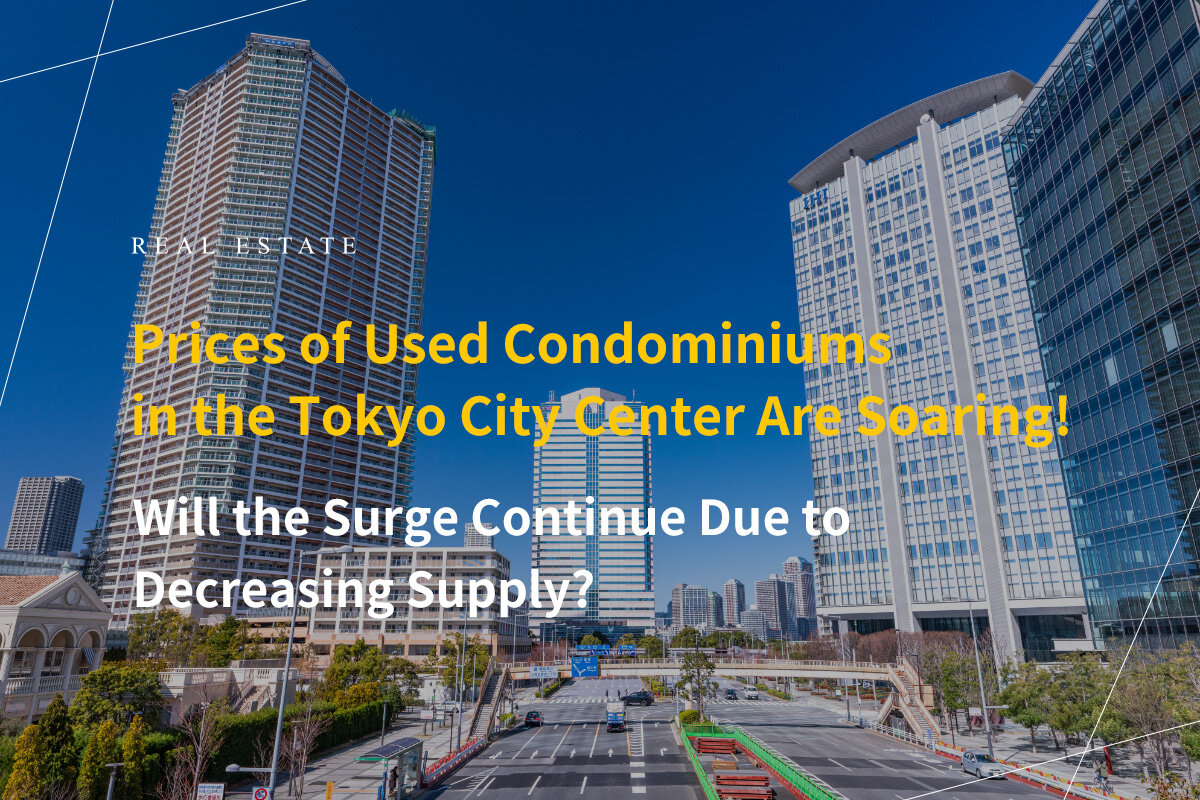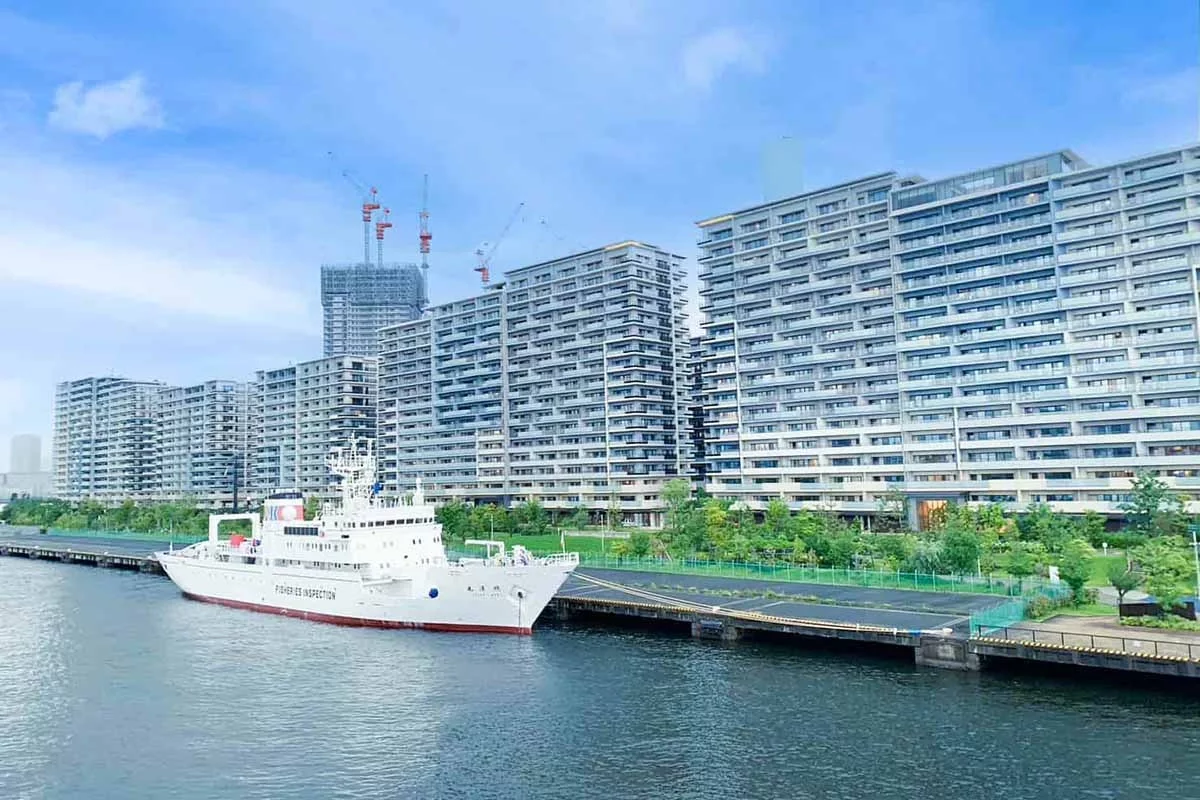Condominium prices have been on a steady rise since approximately 2013. While this upward trend persists across the nation, the pace of growth in pre-owned condominium prices in central urban areas has been remarkably faster, especially since early 2024.
In this article, we will delve into the current state of the pre-owned condominium market and explore the key factors fueling the sharp price surge in central urban regions.
Article Summary
Trends in Pre-Owned Condominium Prices in Central Tokyo
■Price Trends for Pre-Owned Condominiums (Based on 70㎡ Equivalent Prices)

According to Tokyo Kantei, the price of pre-owned condominiums in the six central wards of Tokyo (Chiyoda, Chuo, Minato, Shinjuku, Bunkyo, and Shibuya) surpassed the 100 million yen mark in 2023 (based on 70㎡). While the prices of pre-owned condominiums in other areas within the 23 wards of Tokyo are also trending upward, the increase from January 2018 to January 2024 is approximately 1.2 times for those areas, compared to over 1.5 times in the six central wards.
The price trends and year-over-year comparisons for each area since April are as follows:
■Prices of Pre-Owned Condominiums (70㎡) in Central Areas of Major Metropolitan Regions
| April 2024 | May 2024 | June 2024 | ||||
| Prices | Year-on-Year Change | Prices | Year-on-Year Change | Prices | Year-on-Year Change | |
| 6 Central Tokyo Wards | ¥115.88M | 13.3% | ¥119.24M | 16.3% | ¥120.58M | 17.1% |
| 6 Southern and Western Wards | ¥69.42M | 0.1% | ¥70.30M | 2.1% | ¥71.95M | 4.4% |
| 11 Northern and Eastern Wards | ¥53.00M | 0.1% | ¥53.39M | 0.7% | ¥53.90M | 1.8% |
| 6 Central Osaka Wards | ¥55.47M | 4.3% | ¥57.53M | 8.3% | ¥58.36M | 8.7% |
| 3 Central Nagoya Wards | ¥36.20M | -3.1% | ¥37.13M | 0.2% | ¥36.77M | -0.5% |
While all regions show a trend of rising prices, the rate of increase in the Central 6 Wards far surpasses that of other areas. In the Central 6 Wards, it took nearly a year for the average price to climb from 100 million yen to the 110 million yen range. However, it reached the 120 million yen range in just six months, indicating an accelerated pace of price increases.
What are the factors driving the accelerated rise in condominium prices in central urban areas?
Several factors are believed to be contributing to the surge in condominium prices, including low interest rates, an increase in dual-income households, and the weak yen. However, the recent sharp rise in prices of central urban condominiums is likely attributed to the decline in the supply and inventoryof available properties.
Supply of New Condominiums Has Decreased More Sharply Than in Other Areas
■Annual Trends in the Supply of New Condominiums (Nationwide, Greater Tokyo Area, and Kinki Area)

The supply of new condominiums has fallen to less than half of its peak levels in the mid-1990s. In recent years, there has been a noticeable decline in supply within the 23 wards of Tokyo. In the first half of 2024, the overall supply in the Greater Tokyo Area decreased by 13.7% compared to the previous year, while the 23 wards of Tokyo experienced a significant drop of 32.3%.
■Number of New Condominiums Released in the Greater Tokyo Area and Osaka Prefecture

The decline in supply within central urban areas can be attributed to several factors, with land scarcity being the primary issue. There is very little large, readily available land suitable for condominium development in these areas. Additionally, the growing demand from inbound tourism has fueled a boom in hotel construction. Furthermore, rising material costs, increasing labor expenses, and labor shortages have led to revisions in construction and sales schedules. In April, sales of a high-rise condominium in Chuo Ward, comprising over 2,000 units, were suspended due to concerns about inadequate structural strength.
Developers typically adjust their sales schedules to maintain a certain contract rate. In recent years, the contract rate for new condominiums has hovered around 70%, which is considered a strong sales performance. As such, it seems unlikely that there will be a significant increase in supply in the near future.
Decline in New Listings and Inventory of Pre-Owned Condominiums
■New Listings of Pre-Owned Condominiums by Area in the 23 Wards of Tokyo (Year-on-Year Comparison)

As illustrated in the graph above, the number of new listings for pre-owned condominiums has declined across all areas of the 23 wards of Tokyo. This decrease is most pronounced in the three central wards.
■Inventory of Pre-Owned Condominiums in the Greater Tokyo Area

The inventory of pre-owned condominiums saw a significant decline during the COVID-19 pandemic, reaching its lowest point in 2021. However, it began to recover thereafter, with a peak in the latter half of 2023. Since then, a downward trend has been observed.
■Inventory of Pre-Owned Condominiums by Area in the 23 Wards of Tokyo

The decline in inventory, particularly in the central three wards (Chiyoda, Chuo, and Minato), has been notably steeper than in other areas of the 23 wards. While overall inventory has decreased across Tokyo, the year-on-year reduction rate in June 2024 was -23.1% in the central three wards, compared to -10% in the other wards.
Low Growth in the Number of Transactions
■Number of Pre-Owned Condominium Transactions by Area in the 23 Wards of Tokyo (Year-on-Year Comparison)

While the number of transactions is trending upwards across all areas, the increase has not been substantial. The number of transactions in each area, along with the year-on-year comparison, is as follows:
| April 2024 | May 2024 | June 2024 | ||||
| Contracts Signed | YoY Change | Contracts Signed | YoY Change | Contracts Signed | YoY Change | |
| Central 3 Wards | 237 contracts | 12.9% | 204 contracts | 2.5% | 237 contracts | 2.2% |
| Eastern Tokyo | 409 contracts | 30.7% | 336 contracts | 3.7% | 411 contracts | 12.6% |
| Southern Tokyo | 327 contracts | 9.0% | 278 contracts | 9.4% | 337 contracts | 7.3% |
| Western Tokyo | 256 contracts | 16.9% | 202 contracts | 1.0% | 262 contracts | 4.0% |
| Northern Tokyo | 286 contracts | 23.8% | 238 contracts | 2.1% | 281 contracts | 7.7% |
The central three wards have experienced the lowest rate of transaction growth among the 23 wards of Tokyo. Therefore, it can be concluded that the primary factor driving the rapid price surge of pre-owned condominiums in central urban areas is the decline in supply and inventory.
Will the Prices of Pre-Owned Condominiums in Central Urban Areas Continue to Rise?
In the Greater Tokyo Area, the inventory of pre-owned condominiums has leveled off, with a downward trend emerging since the end of 2023. Meanwhile, the inventory of pre-owned detached houses continues to grow, a trend that is also evident in the 23 wards of Tokyo. Regarding pre-owned condominiums, although inventory has decreased in both the Greater Tokyo Area and the 23 wards of Tokyo, it continues to rise in areas such as the Tama region, Saitama, Chiba, and Kanagawa. In some areas outside the 23 wards, the number of transactions has begun to decline. During the pandemic, changes in lifestyles and working arrangements temporarily boosted demand for relocation, but this trend is believed to have already reached its peak.
Amid these conditions, the continued rise in the prices of pre-owned condominiums in central urban areas is likely driven by a reduction in the number of people willing to sell, while strong demand persists. With the average price of pre-owned condominiums in these areas well above 100 million yen, they are becoming increasingly out of reach for those with average incomes. The primary buyers are affluent couples, both domestic and international investors, and the wealthy. This group includes individuals who can purchase with cash or near-cash equivalents, often prioritizing profitability over acquisition costs. As a result, despite potential interest rate hikes or further price increases, demand for pre-owned condominiums in central urban areas is expected to remain robust.
According to the Japan Real Estate Institute, the rate of increase in condominium prices from October 2023 to April 2024 was the highest among the 15 major cities worldwide, with Tokyo and Osaka leading the way. Given the global trend of excess liquidity, the prices of pre-owned condominiums in central urban areas are likely to continue rising.
■Condominium Price Index

Conclusion
Condominium prices have been rising for an extended period, but there are now areas where demand has decreased and inventory is increasing, as well as areas where declining supply and sustained high demand are driving prices up. Relying solely on macro indicators such as the "Greater Tokyo Area" or "Tokyo" does not fully capture these underlying trends. If the prices of high-end condominiums continue to rise and their share of the market increases, the average price across broader regions will likely continue to climb. However, in specific areas where you are considering buying or selling, demand may have already reached a plateau. When determining the right time to buy or sell real estate, it is crucial to consider not only macro indicators but also local market conditions.



